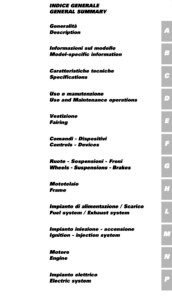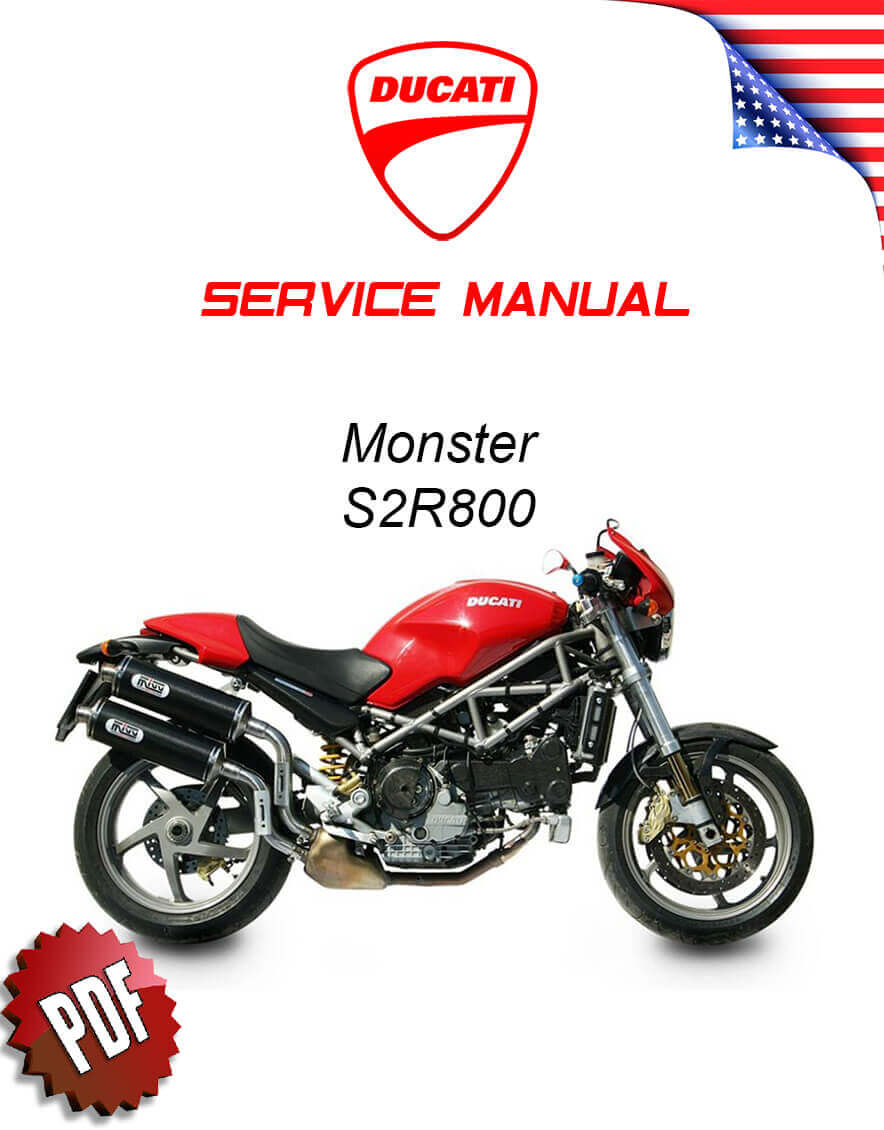Complete PDF version of the Service Manual for the Ducati Monster S2R 800. A MUST for every S2R800 owner.
Download: Immediately after payment!
OEM Original factory workshop manual.
Models covered by this manual: models 2005 to 2007
Number of pages: 548 pages
Table of contents:

This PDF repair manual can be downloaded right after the payment process in complete, on the device of your choice.
We do not offer printed manuals, for the following reasons:
- it is more eco-friendly to use a digital version
- your manual never gets dirty or greasy
- you can always choose to print the specific page(s) you need to work on your bike
- you receive your manual immediately after payment
- it is searchable

Ducati Monster S2R800
The Ducati Monster (also known as the Il Mostro in Italian) is a standard or naked bike motorcycle developed by Miguel Angel Galluzzi and manufactured by Ducati in Bologna, Italy, since 1993. Monster sales accounted for more than half of Ducati’s global sales in 2005. It sports a 90° V-twin engine, known as an L-twin by Ducati, with desmodromic valves, and a tubular steel trellis frame developed by Fabio Taglioni (1920–2001).
Over the years, the Monster line has seen several modifications, ranging from entry-level 400 cc (24 cu in) bikes to top-of-the-line 160 horsepower (120 kW) multivalve, water-cooled superbike-engined models, with as many as nine different Monster versions in a single model year. The Monster’s essential simplicity has also made it a popular platform for custom motorcycle builders, as shown at events such as the Monster Challenge. Monsters eventually accounted for more than two-thirds of Ducati’s output.
In December 2016, the British weekly journal Motorcycle News stated, “The Monster has gone down in folklore as ‘the bike that rescued Ducati’ because to its popularity and low development costs,” noting that about 300,000 were made.
2000s
Until 2000, when Ducati added fuel injection to the M900 model, the bike remained mostly unaltered. Perhaps more crucially, Ducati debuted the S4 in 2001, which included the liquid-cooled four-valve Superbike engine. Other technological upgrades that year were semi-floating front disc brakes with four-piston Brembo calipers, lighter Brembo wheels, and 43 mm Showa inverted forks. The same year saw the addition of a tachometer to all Monster models, as well as updated instruments. The limited edition, 300-unit S4, named after four-time Ducati Superbike Champion Carl ‘Foggy’ Fogarty, was introduced in 2002.
The S4R debuted in 2003, featuring the 996 engine with dual high rise mufflers on the right side, as well as an increase in power and torque (now up to 113HP) over the 916 powered S4.
The S4RS Testastretta, a new top-of-the-line model, was introduced in November 2005. The engine from the 999 Superbike is used in this new model, together with hlins suspension front and rear and radial front brakes. In 2005, Ducati introduced the S2R Desmodue (two-valved Desmodromic engine) line to the Monster family, which was fashioned similarly to the four-valve S4R but with simpler two-valve 800 cc and 1,000 cc engines in the S2R 800 and S2R 1000, respectively. The 2007 Monster 695 was announced in February 2006. It was debuted in June 2006 to replace the Monster 620.
The Monster 696 was revealed in November 2007 and debuted in Barcelona in early April 2008. Its 696 V-twin engine boasts the maximum power output per cubic centimeter of any Ducati air-cooled engine. In September of 2008, the Monster 1100 was unveiled. It is based on the Monster 696 and has a bigger 1078 cc engine, a single-sided swingarm, radial brake calipers, larger forks, and higher suspension. Ducati sold over 12,000 696 models in 2009, making them the first motorcycle manufacturer to sell more than 10,000 bikes in a single year. The 1100 S variant includes fully adjustable hlins suspension components, a new color scheme, and aluminum brake disc carriers, resulting in a 1 kg weight decrease.
Source: Wikipedia

